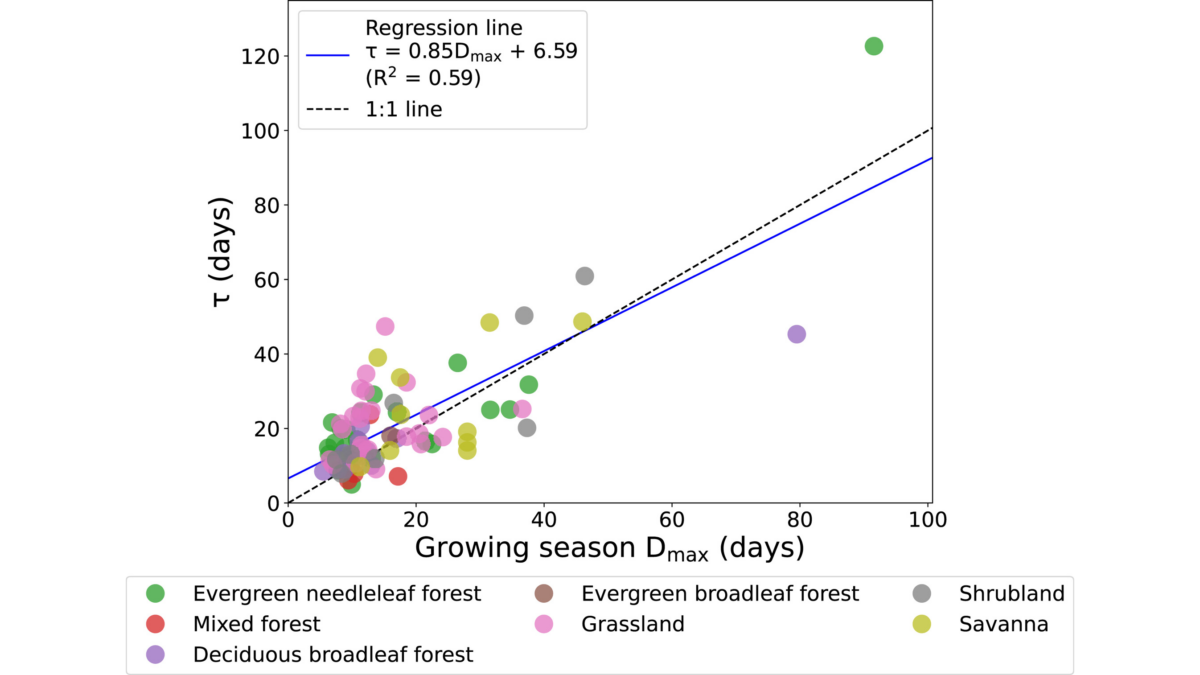Editors’ Highlights are summaries of recent papers by AGU’s journal editors.
Source: AGU Advances
Plant leaves regulate their exchange with the atmosphere through stomata, and models simulating photosynthesis typically apply an optimality principle to regulate stomata and balance carbon uptake against water loss as environmental conditions vary. However, these models only optimize for instantaneous conditions.
Holtzman et al. [2024] present a new model with a longer timescale of optimization, recognizing that plants can discount future carbon gain for stomatal closure under water-limiting conditions. They use eddy-covariance data from a range of ecosystems to demonstrate that their water saving timescale (t) is similar to the longest dry period in a typical year. In other words, plants growing in climates with longer dry spells during the growing season value future carbon assimilation more and close stomates to save water over a longer period than those experiencing shorter dry spells. The results are intriguing, but still leave open questions about how (t) relates to plant hydraulic traits or tradeoffs between plants with different traits that make up the community responses reported in this paper.
Citation: Holtzman, N., Sloan, B., Potkay, A., Katul, G., Feng, X., & Konings, A. G. (2024). Ecosystem water-saving timescale varies spatially with typical drydown length. AGU Advances, 5, e2023AV001113. https://doi.org/10.1029/2023AV001113
—Susan Trumbore, Editor-in-Chief, AGU Advances

